#bibliophilia
Text
Guys help me I'm trying to figure out a pattern
Please please please reblog for sample size!!!
#bibliophile#bibliophilia#bookworm#books and reading#books#booklr#reading#window seat#tumblr polls#polls
72 notes
·
View notes
Text
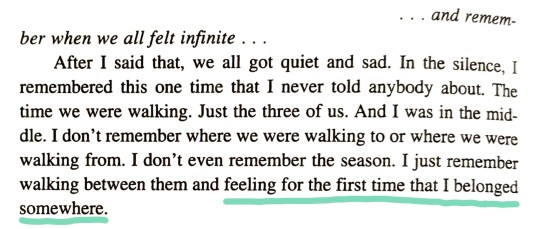



Stephen Chbosky, The Perks of Being a Wallflower
#bibliophile#bibliophilia#book#book excerpt#book quotes#books#quote#quote collection#quotes#quotes books#sad books#sad quotes#perks of being a wallflower#book quotations#book blog#bookblr#the perks of being a wallflower book#the perks of being a wallflower#stephen chbosky
112 notes
·
View notes
Text


The Master of the Brussels Initials is the notname of an artist who decorated gorgeous illuminated manuscripts for royalty like Charles the Noble and the Duke of Berry - perhaps the most extravagant book collector ever to have lived.
This artist, active at the turn of the 14th to 15th century, is notable not only for making works of great beauty, and having an important role in the development of late Gothic art, but also for being a keen observer of nature. The small bug in this full-size miniature depicting the Annunciation, is perfectly identifiable as a firebug, Pyrrhocoris apterus. In fact, G. Evelyn Hutchinson, the "father of modern ecology", wrote an entire fascinating article about the Master of the Brussels Initials and insects depicted by him, available here. He argued that this was more than a curiosity, it was an example of a development within manuscript decoration towards a more naturalistic world view, "part of the same movement that produced the contemporary studies of optics and mechanics in England, France and Germany" and which continued with the production of formal natural history treaties in the 16th century.
So, while it may not have been the only such seed, one impulse to the modest beginning which would eventually give us modern science could be said to be found in the beautiful decorations of medieval manuscripts.
#books#library#reading#illuminated manuscript#illumination#medieval#medieval art#medieval manuscripts#master of the Brussels Initials#history#book history#science#insects#firebug#bibliophile#bibliophilia#old books
62 notes
·
View notes
Text
The book of all books
If you are an avid reader, if you are a book lover, if you are a recurrent visitor of libraries and bookshops, if you are a collector of rare books, or if you are a fan of the hilarious literary comic strips of @myjetpack , this book is for you and I cannot advise you enough to try to read it at least once.

“The City of Dreaming Books”. A wonderful, hilarious, fascinating, bizarre fantasy adventure created by famous German author and illustrator Walter Moers. I read it in French, but an English translation exists - and you, lucky English-speakers, can even read the sequel to this wonderful novel, “The Labyrinth of Dreaming Books”, which is currently unavailable to non-German speaking Frenchies like me. Of course, if you can read German, I also suggest you try to enjoy these marvelous tomes in their original language - but even if you do not understand the text the bizarre, crazy, demented but deeply charming and hypnotizing illustrations of Moers are enough to plunge you into a twisted, inventive, genius world of puns, obsessions, beauties and treacheries.

What is the story of “The City of Dreaming Books”? It is quite simple. They are the memoirs of an elderly lindworm scholar, Optimus Yarnspinner, retelling the greatest adventure he lived in his youth (I am using the English translations for the names - given everything is a pun in this world, the names change from language to language - in French it is Hildegunst Taillemythes, Hildegunst Myth-carver, and in German Hildegunst von Mythenmetz). As a young dinosaur-man of barely 77 years, Optimus is an avid bibliophile and aspiring author, who, on the death-bed of his mentor, inherits a manuscript. Not any manuscript: the manuscript of the best novel ever written in the history of the fantasy world of Zamonia. Reading this breaks you soul, makes you feel every emotions in the most intense way possible, and leaves you a forever changed being.
This discovery prompts Optimus to search for the mysterious author of this manuscript - a brilliant young man that was last seen decades and decades ago, trying to have his novel published, in a town called Bookholm, where Optimus goes to investigate. Begins a exploration and investigation tale in this grand city at the center of the book industry, a quest of unnerving discoveries, hilarious encounters, heart-breaking tragedies, goofy plot twists and sordid crimes, in the beating heart of the literary arts - in the City of Dreaming Books, where reading can kill, and authors can become gods... or devils.

The most intense pleasure brought by this novel is the universe of the titular City, the fabulous, fantastical, mind-blowing creation of Bookholm (Bouquinbourg in French, Buchhaim in German), a fantasy city that is all about books. Five hundred second hands bookshops, a million or so semi-legal book shops, with six hundred different publishing houses, fifty-five printing businesses and twelve paper factories. It is the city where all young authors go to get published, where all famous authors go to be recognized, praised and criticized, where all old authors go to die. All the books of history passed at one point by this wonderful city, where all the shops are centered around reading.
The opticians only give prescriptions for the best reading-glasses. All the alcohol and drugs sold are designe to enhance the reading experience. The pastries are shaped like books, the wood-carvers specialize in building bookshelves and book-holders, every pub has a public reading instead of an happy hour, and there are entire shops merely selling bookmarks. Linguists work in laboratories, dissecting words like animals, and book-binders are this city’s equivalent of trained surgeons. Scientists of Bookholm even go as far as to practice their psychological or biological projects in relation to literature - such as how one species’ literature was influenced by their biology, or the reverse. There are no big sports match - but rhyming competitions in literary salons. And the firemen are excepted to save the books first, the people afterward.
The other great charm of this novel being the whimsical, medieval bestiary-like, borderline-surrealist fantasy world it takes place in. Zamonia is a recurring setting of Moers, who wrote other fantasy books taking place in this “time of myths and legends” supposedly taking place millenias and millenias before the history of the world as we know it today - when there was more continents than today, and when mankind was but a planetary minority believed to be more legend than reality. In this book every character is unique, ranging from talking animals, humanoid reptiles, yetis and giant worms to extremely alien and cartoonesque species that could be coming out of a UFO. Being familiar with the Germanic European folklore can help, since many mythological and fairytale creatures can be found back in those pages (the very protagonist is a lindworm, and in other places German bogeymen such as the rye-wolves can be encountered). All of course, with the unique and strangely superb illustrations of Moers, of which I offer you a quick sample.
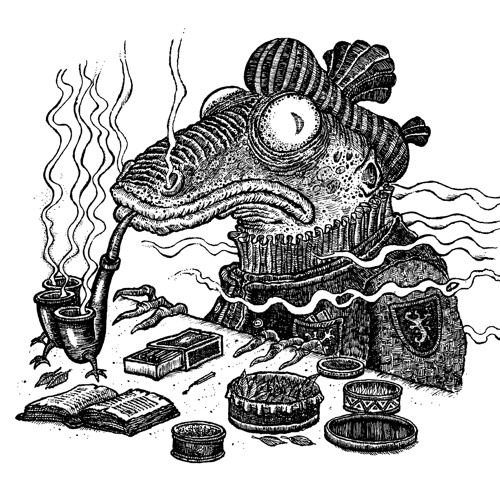
But let’s return to the books! Because this book is about books, all books, and literature, and book-selling, and the love and hate of books. Everything is described with such lavish details and such an imaginative mind - it is the most book-loving fantasy work I have ever read. And it is not without its dark side... Because in this world, there are demonology books, and cursed books, and trap-books designed to kill those that open them, and poisoned pages straight out of “The Name of the Rose”, and obscure literary-alchemists practicing strange editing experiences in the depths of the night, summoning golems of paper and demons of inks... And many of these forbidden and dangerous books are locked up in the catacombs below the city, a gigantic and ancient labyrinth that is regularly visited by the Book-Hunters, terrifying and deadly warriors trained to survive the treacherous paths and many deadly traps of the catacombs, so talented in their quest for books they can identify the nature of a tome merely by its smell.
Because the catacombs of Bookholm are filled with some of the most precious treasures one can imagine. Books of times so ancient they are forgotten ; first editions thought to be lost to the world ; manuscripts that never saw the printing press ; prints with typos so rare they become worth a lot of money... These are precious treasures for a city where dubious dwarfs sell the blood of authors under their coat, and where the finest and most renowned book-shops sell books the same way high-class, luxury-brand clothes sell their products.
And even beyond books, Moers keeps sliding here and there absolutely fantastic little stories, fleshing out the world - ghost legends and fairytales and imaginary geography - to keep us entertained while our sympathetic but also very unfit for adventure (he is a young author after all) has to make his way throughout scheming critics, bloodthirsty book-hunters, excentric dragon-witches, toasts of bees, haunted wines and criminal book-collectors.
And all that I describe... IS BUT THE FIRST PART OF THE BOOK!
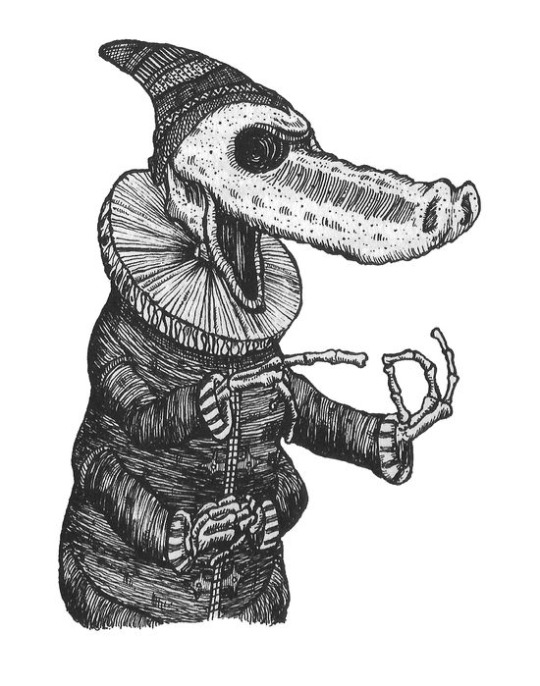
I do not dare say more of it, out of fear of spoiling the surprise for you - but if you are a bibliophile, go check this beautiful novel. Let yourself sink in a world where books are law, justice, art, food, drugs and life, let yourself sink into a fantasy adventure with an ordinary bibliophile and aspiring author as a hero for once, and fall deep, deep into the depths of the labyrinthine catacombs of the books that dream but never die...
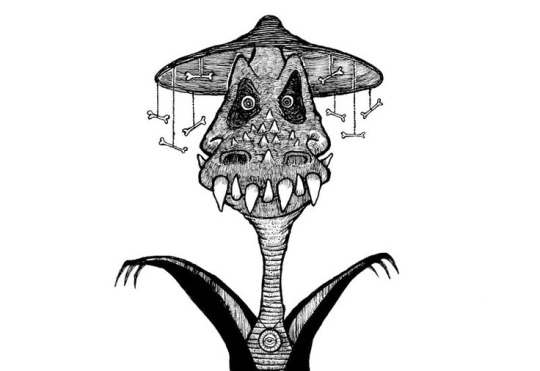
#the city of dreaming books#walter moers#literature#book love#book passion#bibliophilia#german literature#fantasy book#fantasy literature#book recommendations#books about books
42 notes
·
View notes
Text

#journal#personal#pic#booklover#currently reading#bibliophile#bibliophilia#types of intelligence#beyond intelligence#parenting#raising children#intelligence
6 notes
·
View notes
Text
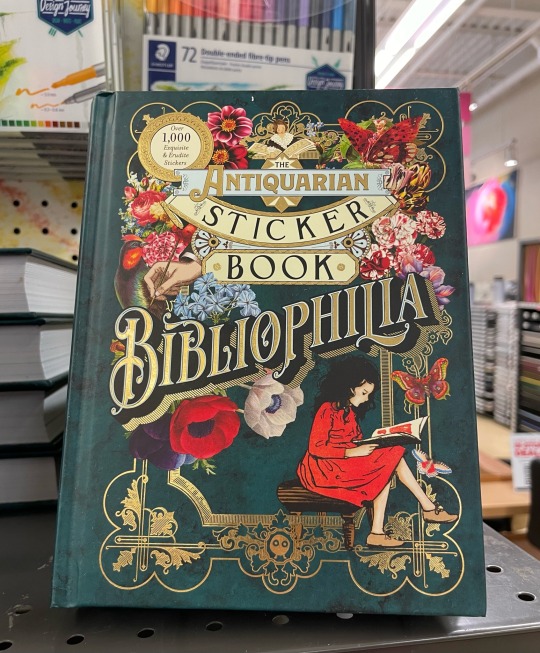
I saw this at the art store the other day and it’s giving Aziraphale and also I want it so bad-
#part idek of everything I see reminds me of the husbands#good omens#aziraphale#stickers#bibliophilia
7 notes
·
View notes
Text

my fancy pen
5 notes
·
View notes
Text
"Nah... no man loves his girl till the point of killing somebody for her"
Adam Carlsen the moment he finds out the tears in his soulmate's eyes were because of his bestfriend:
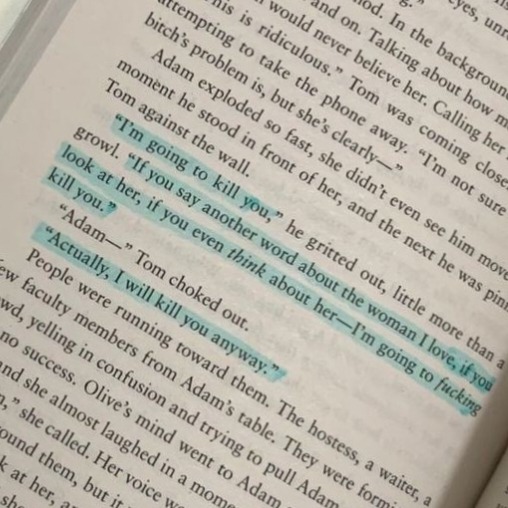
#the love hypothesis#bibliophile#olive and adam#adam x olive#fictional men#fictional boyfriend#books#book quotes#bibliophilia#book annotations#The Love Hypothesis by ali Hazelwood#writers and poets#dark academia aesthetic#dark acadamia quotes#bookish#book blog#bookworm#book review#booklr#books & libraries#english literature#fictional crushes#bookish memes#book memes
61 notes
·
View notes
Text

#girlblogging#lana del rey#gaslight gatekeep girlboss#coquette dollete#girl blogger#waifcore#bookstagram#booklover#bibliophilia#dollycore#the feminine urge#diet coke#star girl#coffee#bella hadid#ultraviolence#lizzy grant
48 notes
·
View notes
Text
I want to drown myself in ink, smother myself with paper. I just want to lose my name, my identity, my heartbeat between the pages of a book. Is that really too much to ask?
11 notes
·
View notes
Text

Benaim, Sabrina. "(i)." Depression & Other Magic Tricks.
#bibliophile#bibliophilia#book#book excerpt#book quotes#books#quote#quote collection#quotes#quotes books#sabrina benaim#depression & other magic tricks#poetry#poem#poem excerpt#excerpts#writing#writings
40 notes
·
View notes
Text
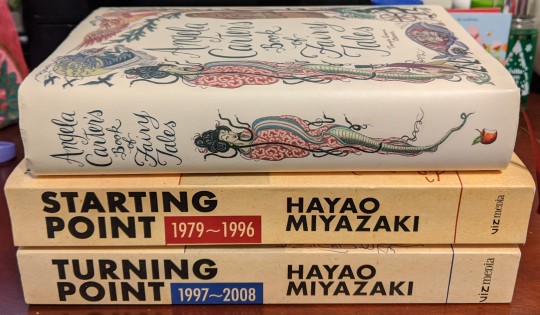
Yes...ha ha ha...YES!
#i WOULD like to read stories and also read words from people who know about stories!#the intro to the carter volume is already worth the price of admission#and just looking at the essay titles in the miyazaki volumes has my brain going brrrrrrr#cannot wait to hear him talk about the animation industry/various works/people/his own endeavors and experiences and Takes#there's at least one in there about lupin so that will be fun to engage with‚ there will certainly be some Takes in there#angela carter#hayao miyazaki#personal#bibliophilia
60 notes
·
View notes
Text
Recommended Reading
Here is a list of books, both prose and graphic, that I think are worth checking out. All of these books are speculative fiction (science fiction, fantasy, alternate reality, et cetera), since that’s essentially the only genre I read. Entries followed by a ♥ are my extra-special favorites. The ones marked with an H won at least one Hugo Award. Those marked with a ▽ contain prominent LGBTQ+ characters or issues.
Lighter Science Fiction
Douglas Adams: The Hitchhicker's Guide to the Galaxy and its first two sequels, The Restaurant at the End of the Universe, and Life, the Universe and Everything. The Hitchhiker’s Guide is a landmark work in SF comedy and is a must-read. If you are an audio listener, then I suggest starting with the 1978 BBC radio play, which was the original version of this story. (If you like THHGTTG, then check out Dirk Gently’s Holistic Detective Agency and its sequel.) ♥
John Scalzi: Any of his SF, especially the Old Man's War series and the Interdependency series (The Collapsing Empire and its sequels). Scalzi’s work, with few exceptions, is not only very funny, but also includes some good science-fiction-y “big ideas.” If you are a fan of Star Trek, then his novel Redshirts, which won a Hugo, will be of particular interest. Interestingly in some of Scalzi’s recent work, such as Kaiju Preservation Society and the Lock In series, he never revels the gender of the main character. Almost all of Scalzi’s audiobooks are read by Wil Wheaton. Wheaton does a great job, but his voice does tend to make the listener imagine the main character as a man, even when there’s no textual evidence to support that imagining. ♥H
Martha Wells: The Murderbot Diaries (All Systems Red and sequels), winner of the 2021 Hugo Award for best series. Despite the name, this series of five novellas and one novel follows a human-bot hybrid (not a robot) security unit (SecUnit) as it struggles to protect its stupid humans while coping with social anxiety and finding time to watch soap operas. Plus, it doesn’t really murder all that often. The series is very funny, but it is also a surprisingly serious and insightful examination of sentience, autonomy, and living with neuroses. Wells, who identifies as neurodivergent, will write three more Muderbot books, beginning in November 2023, as part of her six-volume deal with Tor. I particularly enjoy Kevin R. Free’s narration of the audiobooks. I’m counting these books for LGBTQ+ representation because Murderbot is nonbinary and asexual, but since it isn’t human (and doesn’t want to be), nonbinary and/or ace readers (whom I assume to be human) may not find themselves reflected in Murderbot’s experience. ♥H▽
Scott Meyer: The Authorities series (The Authorities and Destructive Reasoning), Master of Formalities, and Grand Theft Astro. Meyer’s books are all hilarious, fun adventures. The Authorities books follow a privately funded taskforce created to investigate crimes that the police cannot solve. Megan Sloan is one of my favorite detectives in fiction. Master of Formalities follows a protocol expert in a far-future monarchy. My favorite gag in this book occurs when someone becomes his own uncle. Grand Theft Astro is a heist story with Meyer’s trademark humor. If you enjoy these books, check out his Magic 2.0 series, which is described in the Lighter Fantasy/SF Mashups section. Luke Daniels, who narrates all of Meyer’s audiobooks, does an excellent job with these stories. ♥
Ernest Cline: Ready Player One. This book is great fun, especially for those that remember the ‘80s or enjoy the popular culture of that era. The audiobook is narrated, very appropriately, by nerd icon Wil Wheaton.
Andy Weir: The Martian and Project Hail Mary. The Martian is the basis of the very faithful film adaption (which I also recommend), and it is super-realistic science fiction with a lot of jokes. Project Hail Mary feels much like The Martian (though far more speculative) at first, but a third of the way in, a major plot development shakes up the story for the better. ♥
Dennis E. Taylor: We are Legion (We are Bob) and sequels (the Bobiverse series). This series begins with the dark premise of the protagonist being uploaded into a von Neumann probe and launched into deep space, but it’s actually very funny. Ray Porter does a great job narrating the audiobooks.
More Serious Science Fiction
David Brin: Startide Rising and The Uplift War. In this universe, sentient species modify or “uplift” presentients to help them bridge the gap to sentence, after which the “client” species is indentured to its “patron” for 100,000 years. Humans, once discovered by the Five Galaxies civilization, only escape indenture because they have already uplifted chimpanzees and dolphins, making humans the lowest-ranking and most hated patron species in the known universe. These books have great worldbuilding and aliens that are very well developed in terms of both biology and culture. The other Uplift books are also good, but these two, which each won a Hugo, are my favorites. ♥H
David Brin: Glory Season. This novel is an amazing extrapolation of an agrarian society built on parthenogenesis. The main character is a rare “variant,” a person who wasn’t cloned but was instead conceived sexually via one of the tiny number of men on the planet. She and her twin must find roles in society without the benefit of membership in a clan of genetically identical women occupying an established niche. Plus, there are fun puzzles and Conway’s Game of Life. ♥
Vernor Venge: A Fire Upon the Deep and A Deepness in the Sky. In this universe, the laws of physics vary with the average density in the galactic “neighborhood.” Thus, while the Earth lies at a point where only sublight speeds and human-level intelligence are possible, farther out in the plane of the galaxy and especially off the plane, superluminal speeds and superhuman intelligence can be achieved. Also, on one planet in the “Slow Zone,” there is a race of wolf-like beings who are not individually sentient but who achieve sentience (via ultrasonic communication) in groups of four to six. These books have spectacular worldbuilding, well conceived aliens, and some very compelling science-fictional “big ideas.” Can be read in either order, but publishing order (as listed above) is likely best. Each novel won a Hugo. ♥H
Vernor Venge: Across Realtime. This volume is a compilation of the novels The Peace War and Marooned in Realtime as well as the novella The Ungoverned. These stories revolve around an interesting technology for altering how time passes.
James S. A. Corey: The Expanse series (Leviathan's Wake, eight sequel novels and several shorter works). Fairly hard science fiction based on a politically strained three-way balance of power in a solar system that is confronted with terrifying alien technology. This series is the basis for The Expanse TV/web series, which I also recommend. The Expanse won the 2020 Hugo for best series. ♥H
Ann Leckie: Ancillary Justice and sequels (The Imperial Radch series). A far-future story in which a sentient ship formerly controlling and inhabiting many human bodies is now confined to a single human body (and with its ship self destroyed). These books attracted a lot of attention because the Radchaai language only uses female pronouns, and thus the gender of many of the characters is never revealed, but there's a lot more to this story than that. Ancillary Justice won basically all the awards offered in 2013. Leckie’s novel Provenance and her upcoming Translation State take place in the same universe but follow new characters. ♥H▽
Arkady Martine: A Memory Called Empire and A Desolation Called Peace. A new ambassador (with the old ambassador’s memories shoved into her brain) is appointed to represent a “barbarian” space station to the “civilized” Teixcalaanli Empire, where she becomes embroiled in a succession crisis and meets people with names like Three Seagrass (my favorite character) and Eight Antidote. Eventually, she must also negotiate first contact with sentient aliens. These books are an interesting examination of imperialism and language. Both novels won the Hugo Award. H▽
Becky Chambers: The Wayfarers series (The Long Way to a Small, Angry Planet and sequels). This anthology series explores different cultures and locations in a well developed galactic civilization. Wayfarers won the 2019 Hugo Award for best series. H▽
Lighter Fantasy/SF Mashups
Scott Meyer: Off to Be the Wizard and its sequels (the Magic 2.0 series). These books are science fiction disguised as fantasy. An amateur hacker discovers a computer file that can be edited to change the real world. Within 24 hours, everything goes wrong, and he flees from the FBI to medieval England, planning to set himself up as a wizard using his new capabilities. That plan doesn’t go well, either. These books are laugh-out-loud funny and may be of particular interest to computer scientists. The audiobooks’ narrator, Luke Daniels hilariously brings the text to life. ♥
More Serious Fantasy/SF Mashups
Tamsyn Muir: The Locked Tomb series (Gideon the Ninth, Harrow the Ninth, Nona the Ninth, and Alecto the Ninth [not yet published]). Charles Stross described the first novel as “Lesbian necromancers explore a haunted gothic palace in space!” Honestly, I’m not sure whether to put this series under the “Lighter” or “More Serious” heading. There is a lot of humor, especially in the first book, but there is also quite a lot of horror and sadness. The second novel will absolutely gaslight you, forcing you to question your own sanity, but you’ll be glad you trusted Muir before you reach the end of the book. I can’t imagine anyone other than the excellent Moira Quirk narrating these books. ♥▽
John Scalzi: The God Engines. This novella, in which humans use enslaved gods (defeated enemies of their own god) to power their starships, is almost the only Scalzi work without a large dose of humor. It’s very good, though.
Anne McCaffrey: The first six Dragonriders of Pern books. (I've only read the first six.) These are science fiction disguised as fantasy and are classics in the genre. Far in the future, on an agrarian planet that has forgotten its history, humans ride sentient, telepathic dragons into battle against deadly spores that fall from the sky when another planet in an extremely eccentric orbit comes close.
Lighter Fantasy
Nicholas Eames: The Band series (Kings of the Wyld, Bloody Rose, and Outlaw Empire [not yet published]). Mercenary bands are the rock stars of the fantasy world in which these novels take place, attracting rabid fans and touring huge arenas. These books certainly have strong elements of humor, much of which is focused on the central conceit, but there is also a lot of action and pathos to be had. Both published books a great fun to read, and I’m looking forward to reading the third.
Tamsyn Muir: Princess Floralinda and the Forty Flight Tower. This novella subverts fairytale tropes and comments on gender roles while delivering an outsized dose of Muir’s trademark dry humor. Moira Quirk is hilarious as the audiobook narrator. I’m counting this book for LGBTQ+ because one of the characters doesn’t identify with any gender and because the story examines gender roles. ♥▽
Travis Baldree: Legends and Lattes. A female orc warrior retires from adventuring to open a coffee shop. "What's coffee?" everyone asks. This novel is well crafted, full of interesting characters, and very cute. My friend @novelconcepts aptly described it as “a beautiful warm hug of a book.” There's even a tiny touch of WLW romance, if you’re into that. Baldree is writing a prequel. ▽
More Serious Fantasy
Brandon Sanderson: All of the series and standalone books that are set in the Cosmere (rather than on some alternate Earth). Mistborn: The Final Empire is probably a good place to start. The Stormlight Archive (The Way of Kings and sequels) is my favorite series of Sanderson’s, but each of those books is >1300 pages or >45 hours in audio form, so it may not be the best place to start. Era 2 of the Mistborn series (set 300 years after the Era 1) is probably the most fun. Sanderson also has many books not set in the Cosmere that are more than worth reading. His method of taking a break from writing is to write on a different series, so, every year, he puts out ~400,000 words worth of material (3-4 normal novels or a single Stormlight book). If you listen to the audiobooks of the Stormlight Archive, I recommend getting the hardcopy as well, since the art included really helps bring the world of Roshar to life. ♥
Scott Lynch: The Lies of Locke Lamora and sequels (The Gentleman Bastard series). Great worldbuilding of an original fantasy world with dark humor. Lynch finally completed his first draft of Book 4 (of 7 planned) in May 2019 after a 4-year delay, so I’m hoping it will be available eventually. I’m starting to give up hope, though.
China Miéville: Perdido Street Station. Very rich worldbuilding. Very, very dark. Don’t read this book if you aren’t interested in depressing storylines. Miéville’s other work is just as inventive and, in his word, “weird” as this one.
N. K. Jemison: The Broken Earth trilogy (The Fifth Season and its sequels). These books have an intriguing premise, extensive worldbuilding, and an interesting writing style. These novels won the best-novel Hugo for three consecutive years, which no author had done before. H▽
Alternate Reality (Including Alternate History and Steampunk)
Elizabeth Bear: Karen Memory. This novel follows a lesbian prostitute as she teams up with a lawman in a steampunk version of a Seattle-like city in the Pacific Northwest. I also enjoyed Bear’s space opera series, White Space (Night and Machine). ▽
Cherie Priest: Boneshaker and its sequels (The Clockwork Century series). Steampunk + zombies = fun. This story begins with a plague of zombification erupting out of Seattle, and it finally provides a reason for Steampunks to wear goggles. ♥
Ian Tregillis: The Mechanical and its sequels (The Alchemy Wars series). Alchemy + steampunk robots + a little philosophy.
China Miéville: The City and the City. See the Detective Stories section of this document. ♥
Felix Gilman: The Half-Made World. Steampunk mixed with fantasy. Also, sentient, demon-possessed firearms.
Mary Robinette Kowal; The Lady Astronaut series (The Calculating Stars and sequels). This universe is an extremely hard-science-fiction alternate history in which a catastrophic event dramatically accelerates the space program. The Lady Astronaut of Mars, a short story, is chronologically last but was written first. There’s also a short story called “We Interrupt this Broadcast” that comes chronologically first but isn’t closely connected to the rest. Kowal’s second job is audiobook narrator—she narrates Seanan McGuire’s October Daye series, for example—and she narrates all these books herself. Interestingly, Kowal’s third job is puppeteer, so she’s pretty busy.
Scott Westerfeld: The Leviathan series, as described in the young-adult section of this list. ♥
Detective Stories in Speculative-Fictional Settings
Scott Meyer: The Authorities and Destructive Reasoning. See the Lighter Science Fiction section. ♥
John Scalzi: Lock In and its sequel, Head On. This series of detective stories takes place in a world where a disease has left millions of people “locked into” paralyzed bodies and forced to use remotely operated mecha to interact with the world. Scalzi never reveals the gender of the main character, leaving it up to the reader’s imagination.
John Scalzi: The Dispatcher series. As of a few years ago, if someone is intentionally killed, they stand a 99.9% chance of recovering with their body reset to a few hours earlier, which makes murder more difficult, but not impossible. Dispatchers are licensed to kill—I mean dispatch—people before they can die from injuries or illnesses, thus giving them a second chance. One such service provider gets caught up in illegal dispatches and a series of mysteries.
Brandon Sanderson: Snapshot. Two detectives are sent into a snapshot, a detailed simulation of an entire city and its millions of inhabitants on a specific day, to investigate a crime.
China Miéville: The City and the City. This book is amazingly thorough exploration of a ridiculous premise: two cities occupying the same space. This novel is probably my favorite of Miéville’s books. ♥
Richard K. Morgan: Altered Carbon. A murder mystery with an SF “big idea” at its core. The basis for a Netflix series that I haven’t seen.
Superheroes and Supervillains in Prose
Brandon Sanderson: Steelheart and sequels (The Reckoners series). This is a young-adult series in which all super-powered people, called Epics, eventually turn evil.
Seanan McGuire: The Velveteen series. This series is McGuire’s funniest work and is available for free here, but I recommend buying the books to support the author. McGuire also has a number of other fantasy series under her own name as well as some SF/horror series under the pen name Mira Grant.
Comics and Graphic Novels
Brian K. Vaughan, Cliff Chiang, and Matt Wilson: Paper Girls. This 30-issue comic follows four newspaper-delivery girls who get swept up in a temporal war on Hell Day, 1988. They travel to the ancient past and the far future, meet their adult selves, and learn a lot about themselves in the process. The comic was adapted into an excellent Amazon Prime series, which is a bit more character-focused than the plot-driven comic. Both comic and show are recommended. ♥▽
Ryan North: The Unbeatable Squirrel Girl. This comic was my favorite ongoing superhero series until its recent ending. Firstly, it’s hilarious. Secondly, since Doreen Green (Squirrel Girl’s alter ego) is a computer-science student, there are a number of gags about coding and math. Thirdly, the heroine usually solves her problem not by beating up the villains, but by empathizing with them, understanding their problems, and helping them find nonviolent solutions. Since the series ended with Issue 50, it’s quite possible to read it all. ♥
N. D. Stevenson: Nimona. This mash-up of fantasy and science fiction is not only filled with humor but also includes a surprising amount of sweetness. ▽
Various authors: Lumberjanes. This young-adult comic series follows a group of cabin-mates at a summer camp for girls—excuse me, “hard-core lady-types”—as they encounter a surprisingly high frequency of supernatural phenomena over one time-dilated summer. This comic wrapped up its run after 75 issues. ▽
Alan Moore: Watchman. There’s a reason many people point to this graphic novel as an exceptional example of the genre. Honestly the way the story is told is more interesting than the story itself, but the storytelling is well worth the price of admission.
Short Stories in Speculative-Fiction Settings
Various authors: Metatropolis and its sequels. This series of anthologies is a near-future look at how cities (and green spaces) might evolve.
John Scalzi: Shadow War of the Night Dragons, Book One: The Dead City: Prologue. Trust me, read this hilarious fantasy parody for free here.
John Scalzi: Miniatures. A collection of very short science-fiction stories.
Young-Adult Speculative Fiction
Brandon Sanderson: The Rithmatist. In an alternate United States (so not in the Cosmere), geometric drawings are used to defend the world against an onslaught of 2D creatures. If you listen to the audiobook, I strongly suggest buying the hardcopy as well, since the drawings included play such as strong role in the story. I also suggest the Reckoners series, listed above, but The Rithmatist is my favorite non-adult story from Sanderson. ♥
Scott Westerfeld: Leviathan, Behemoth, and Goliath. This series takes place in an alternate-history WWI, where one side uses steampunk mecha, and the other relies on genetically engineered animals. There’s a bonus epilogue online, for those how can’t get enough. The hardcopy contains some very nice illustrations. The companion Manual of Aeronautics provides much additional (full-color) artwork, though the character descriptions in the last few pages contain major spoilers. ♥
Mark Lawrence: The Book of the Ancestor trilogy (Red Sister, Grey Sister, and Holy Sister). On a world being buried under ice, an orphan with magical powers joins others like her training to become warrior nuns. ▽
Myke Cole: The Sacred Throne series (The Armored Saint and sequels). In a land ruled by a religious tyrant who claims to have defeated devils from another plane, a teenage girl must fight to protect those she loves when the emperor’s vicious zealots arrive at her tiny village. Plus, there’s a steampunk mecha suit. The age of the protagonist points toward a young-adult audience, but this book has far more violence than is typical of YA novels. ▽
T. Kingfisher: A Wizard’s Guide to Defensive Baking. “T. Kingfisher” is a pseudonym used by Ursula Vernon for young-adult and adult titles. This book follows a very minor wizard whose magic only works on dough. The story is full of humor and heart, and there’s more than a little (bread-based) action as well.
Anne McCaffrey: The Harper Hall Trilogy: Dragonsong, Dragonsinger, and Dragondrums. These books are a subset of McCaffrey’s Dragonriders of Pern series, which is discussed eleshere.
Suzanne Collins: The Hunger Games series. These books are the basis for the kids-killing-kids battle royale film series.
Children’s and Middle-Grade Speculative Fiction
Lemony Snicket: A Series of Unfortunate Events. Very well done, but also very dark. The Netflix series based on the books is also quite good.
Ursula Vernon: Castle Hangnail. This adorable story follows a would-be wicked witch who applies to fill a vacancy at the titular castle.
Brandon Sanderson: The Alcatraz series (beginning with Alcatraz vs. The Evil Librarians). These books take place on an alternate Earth (thus not in the Cosmere) where most of the world is run by a cabal of evil librarians. There’s a ton of fun adventure and silly humor, which my son loved when I read them to him as an 8- to 9-year-old. Be sure to get the later printings with art by Hayley Lazo; her work is great.
Kazu Kibuishi: The Amulet series (beginning with The Stonekeeper). A portal-fantasy graphic novel with beautiful art and an interesting, magical setting.
#unsolicited opinions#bibliophilia#science fiction#fantasy#speculative fiction#alternate reality#alternate history#detective story#mystery#recommendation#books
23 notes
·
View notes
Text

IN THE DISTANCE HEAR THE LAUGHTER
OF THE LAST UNICOOOOORN
I'M ALIIIIVE
I'M ALIIIIIIIIIVE!!!
#i cant believe i found this#online i couldnt get it for any less than 20 quid#whack#anyway im SO excited to read this u have no idea#bibliophilia
12 notes
·
View notes
Text

Foyles Bookshop
Welcome booklovers, you are among friends ❤️🤗📚🎄
5 notes
·
View notes
Text
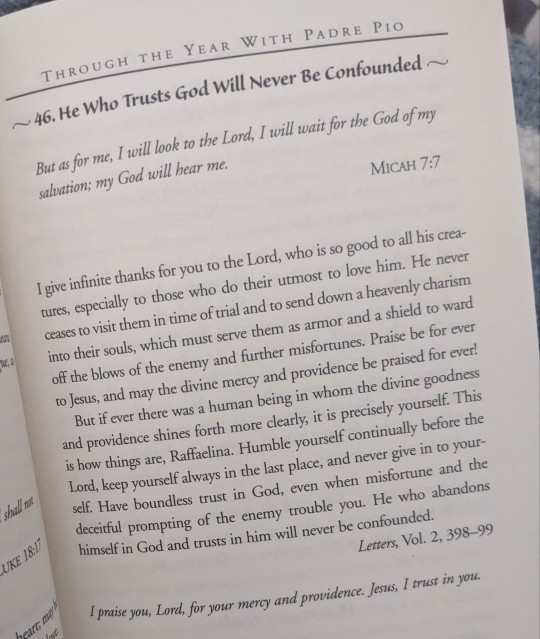
#journal#personal#pic#currently reading#today's message#saint padre pio#padre pio#wisdom#spiritual nourishment#catholic#catholic faith#catholic philosophy#catholic on main#trust god#bibliophile#bibliophilia#booklover#inspiration#bible study#gratitude#praise god#god#humility
3 notes
·
View notes